Eastern Bluebird Early Life
We’ve had a very successful start on our Eastern Bluebird nestbox trail this year. We have 8 nestboxes in our trail to provide nesting habitat for the Eastern Bluebird and other cavity-nesting birds. Cavity-nesting birds are under pressure because as we develop more land, we clear out the dead trees that normally provide their natural nesting sites.
The nestboxes are spaced about 100 yards apart although they are not very evenly distributed. The bluebirds are very territorial so the nestboxes should not be too close together. Most of them have the openings facing south and we’ve tried to place them on an edge, a boundary where there are trees and open grassland.
We check our nestbox trail every Sunday and maintain records of our observations. So far, we have fledged 5 broods of bluebirds and several wrens.
The following photographs are a collection that I assembled to show the early life history of the bluebirds. They are not of a single nestbox, but are representative of the life cycle.
A New Eastern Bluebird Nest
The first photo is of a new nest. We have been checking the nestboxes for two seasons now, and I can easily recognize the bluebird nests now.They are very neatly constructed from small grass stems. The never use tree twigs, branches, leaves, or animal fur.
New Eggs!
Here’s a nest with five small, very pretty, blue eggs. Five seems to be the typical number of eggs in a brood. I don’t think I’ve ever seen more, but sometimes we see four. The mother bird lays one egg a day, but they all hatch at the same time. I wonder what controls that? My best guess is that the incubation rate is temperature-dependent and she evens out their development by not sitting on the eggs until they are all present.
Freshly Hatched!
This photo shows what I believe is a freshly hatched baby. The gestation period is about 12 to 14 days, and they all hatch within a day of each other. Interestingly, its egg shell is no longer in the nest. Do the parents remove it? Look at how big the eyes are relative to the head! They are also largely naked; no down feathers, and just a few tufts.
About 1 Week Old
Here’s a photo of what I estimate to be chicks about 1 week old. They don’t realize that’s it me making the commotion and think they’re about to get fed. Can you imagine how busy the parents must be keeping those five mouths fed? Notice that their eyes are still closed and they don’t have many down feathers.
10 Days Old
Now they are mostly covered with down feathers. They still have a few bare spots, but not many. Their eyes are now open, although but these have their eyes shut. Maybe they just ate!
17 Days Old
Now they are completely covered in down – no more bare spots. They are also starting to get real feathers, especially on their wings.
24 Days Old
Here they are, almost ready to fledge. It looks like the down feathers have all been replaced by real feathers. You can even see the bright blue on their wings. It’s just starting to show, but eventually their entire body except for the breast will be bright blue. When we checked them the following week, the nest was empty. We saw several bluebirds flying in the vicinity of the nestbox, so we know they’re still around.

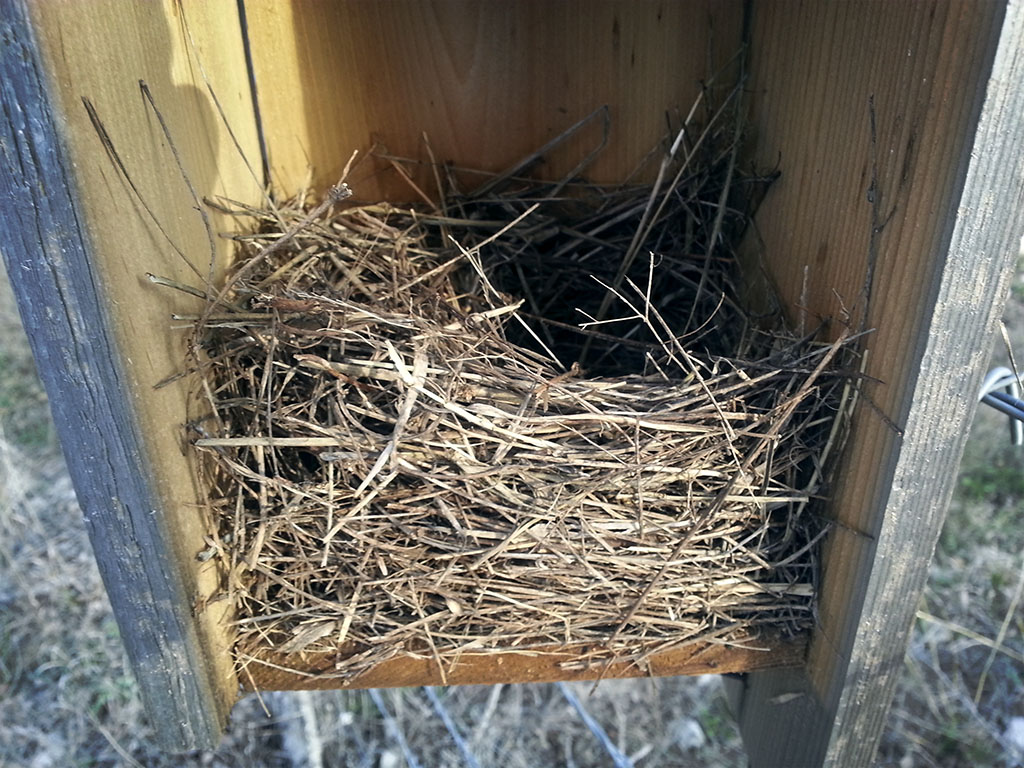
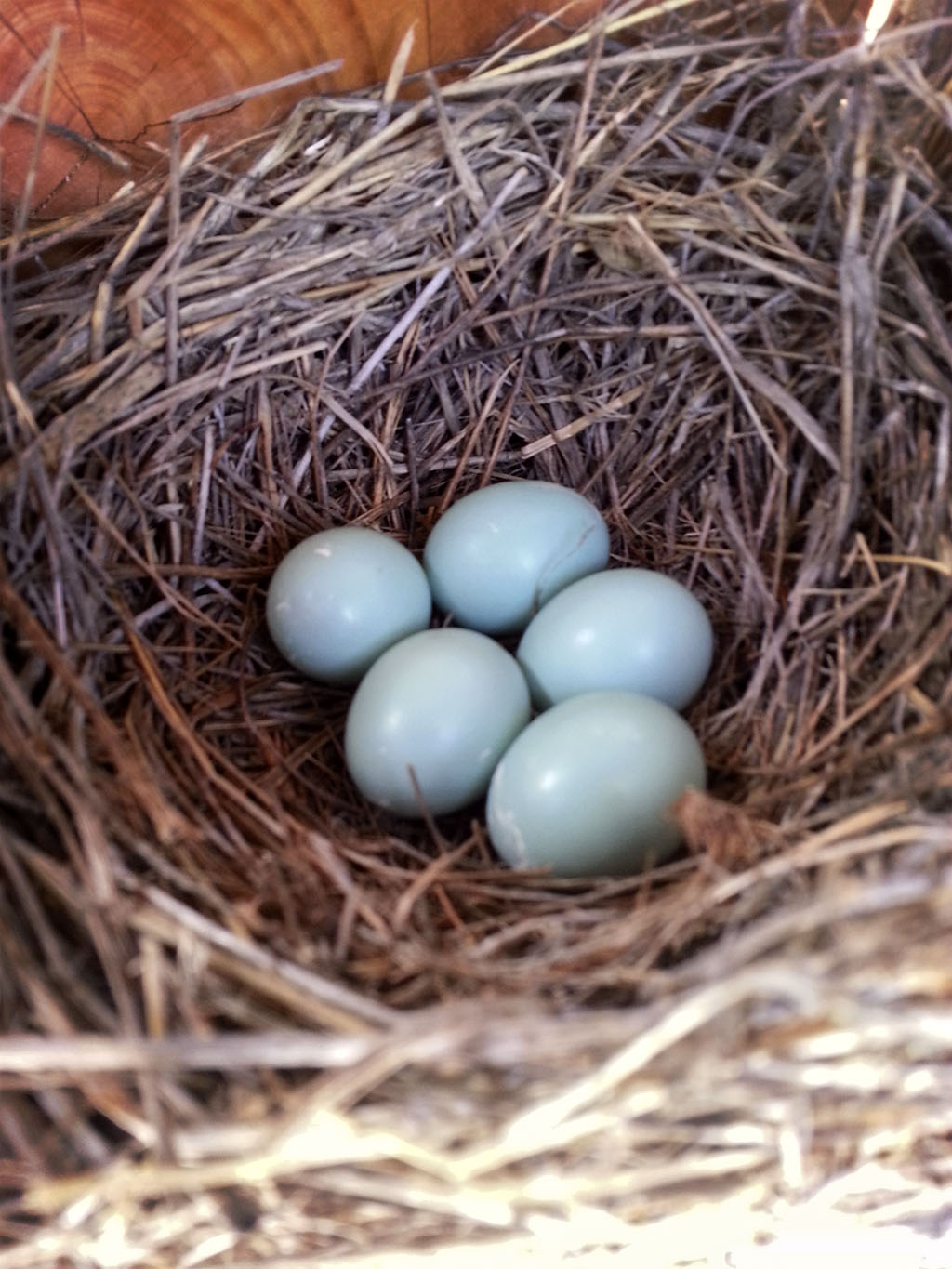
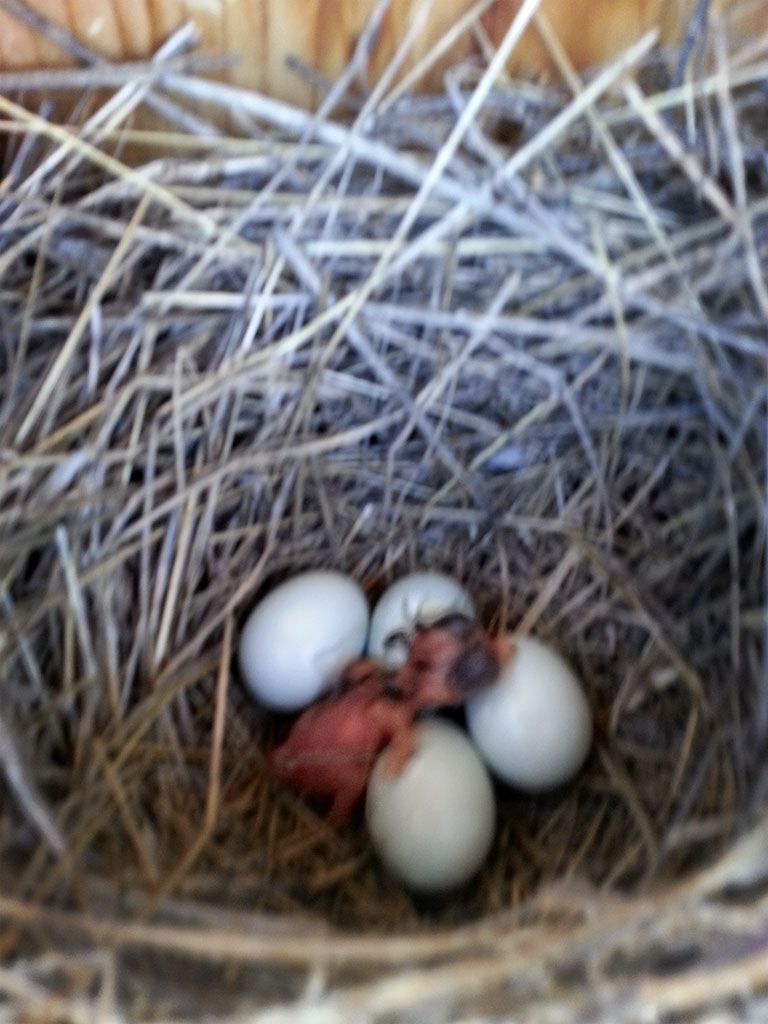
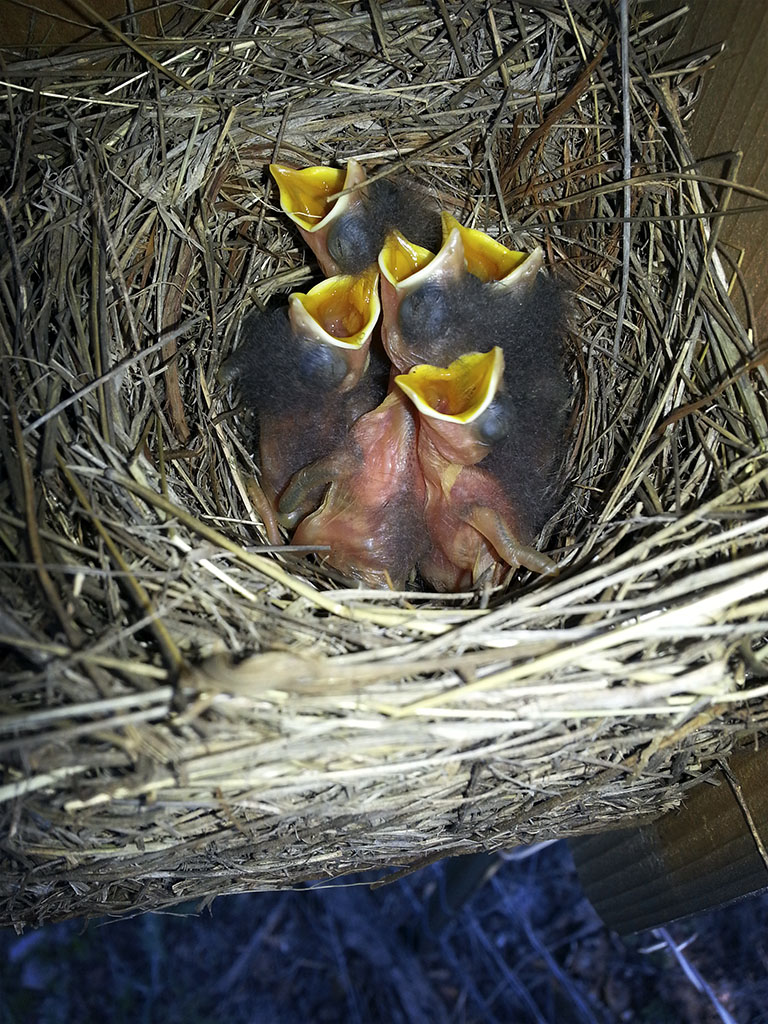
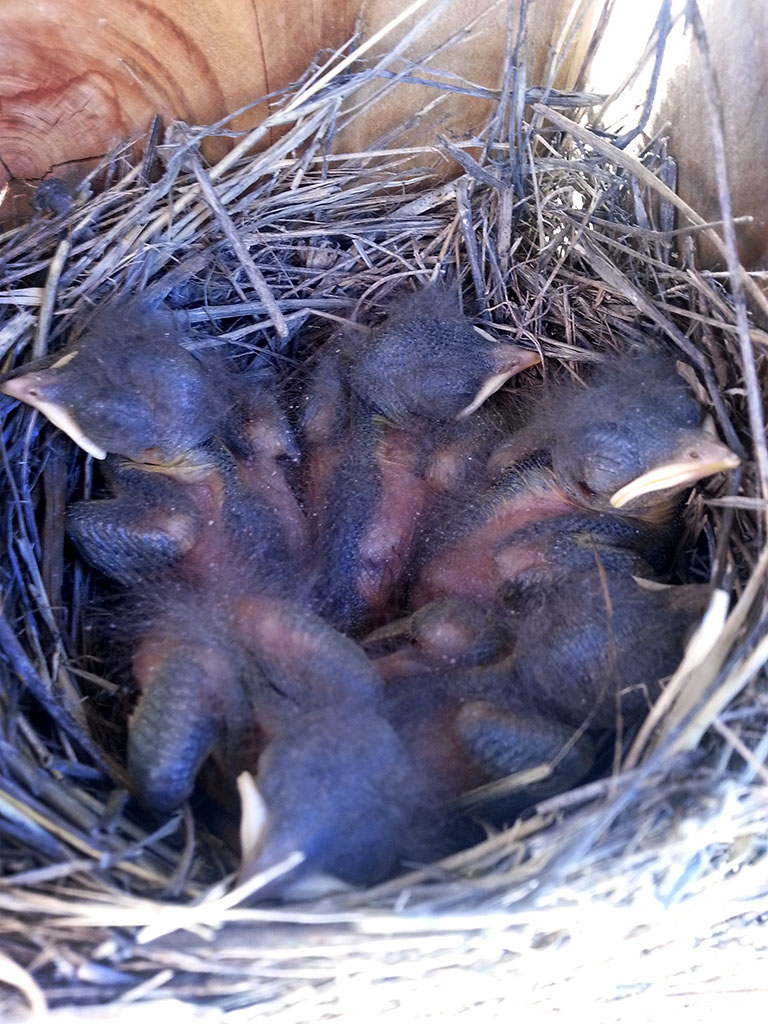
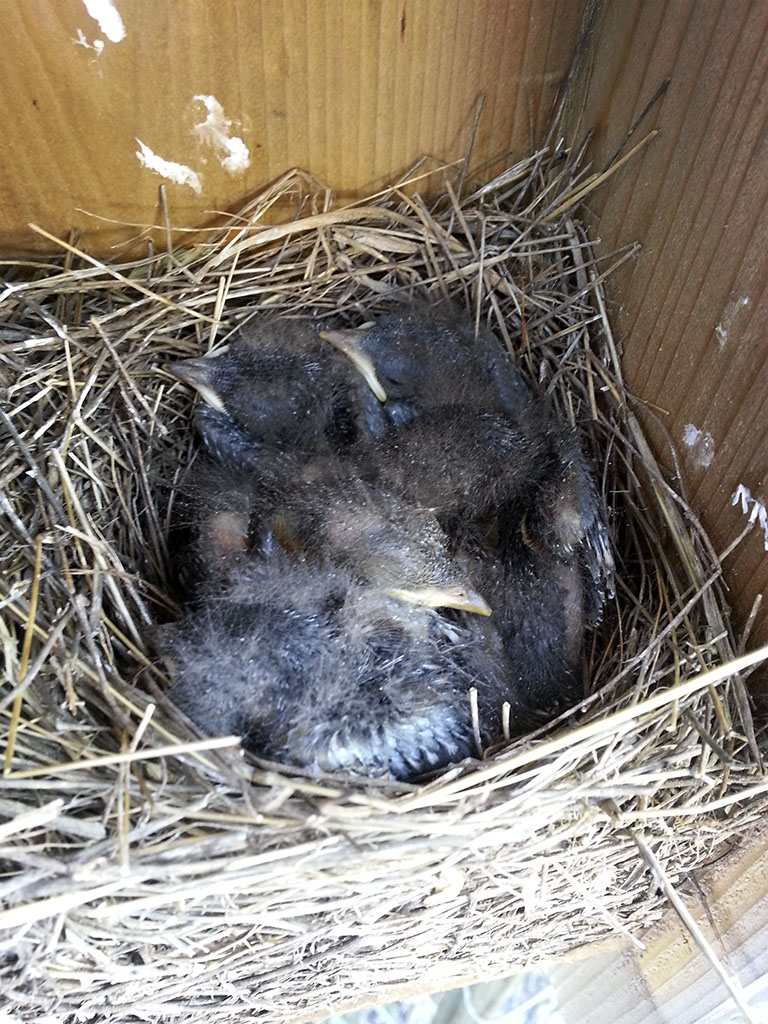

Congratulualtions ! Art Great Work and a lot of Patience.
Really Proud of your endevors.